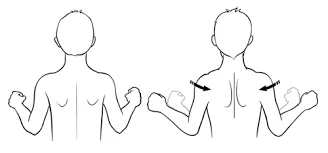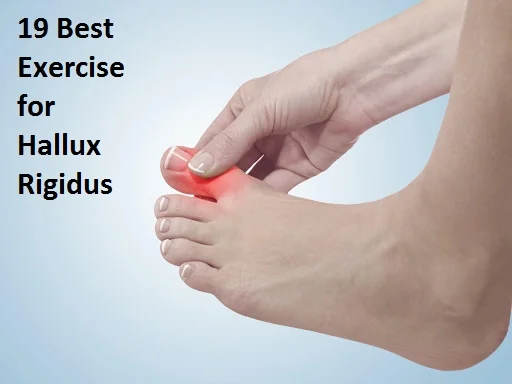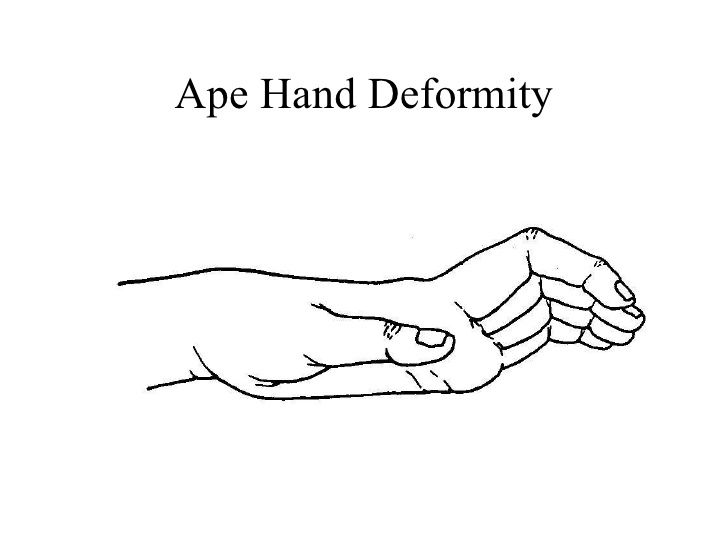Best Exercises for Bulging Disc in Lower Back
A bulging disc in the lower back can cause discomfort and limit mobility, affecting daily activities. Addressing this issue through targeted exercises can help alleviate pain, improve flexibility, and strengthen the muscles supporting the spine.
It’s crucial to focus on gentle, controlled movements that enhance core stability while avoiding exercises that place undue strain on the lower back.
Table of Contents
What is a Bulging Disc?
- A disk bulging in the lower back occurs when some of the soft jelly in the center of the disc slips out of the tough exterior.
- In their lifetime, up to 80% of people will experience a lower back pain episode.
- With a 2:1 male-to-female ratio, those in the 30- to 50-year-old age range are most likely to have disc bulges. Ninety-five percent of disc bulges in the lumbar spine happen at the lower level in individuals between the ages of 25 and 55. Disc bulges from the mid to higher lumber spine are more common in those over 55.
- Disc bulges are most common in the lower back (Lumbar region) but can occur in any part from the neck to the lower back.
Definition:
- A bulging disc in the lower back is a common condition in which the nucleus pulposus (inner portion) of a spinal disc remains within the annulus fibrosus (outer portion), as compared to a herniated disc in which the nucleus exudes out of the disc.
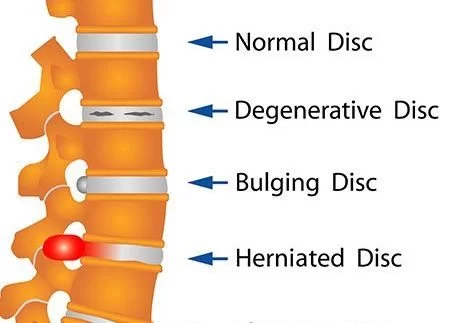
There are four Stages of Disc Bulge:
- Disc protrusion(bulging disc)
- Prolapsed Disc
- Disc Extrusion
- Sequestered Disc
1) Disc protrusion:
- Disc protrusion (also called a bulging disc) is a usual back injury that affects intervertebral discs in the spinal column.
- In addition to providing cushioning, support, mobility, and shock absorption during spinal movement, intervertebral discs divide two vertebrae.
- Their structure consists of a soft, jelly-like nucleus pulposus surrounded by a stiff outer ring.
What are the Causes of Lower Back Bulging Disc?
- A bulging disc is a usual back injury that can occur from several causes. The majority of bulging discs occur from one or more of the following factors.
- Wear and tear. The most common cause of disc protrusion is age-related wear and tear. As we are getting aged spinal discs become drier, less flexible, compressed, and more prone to tears and injuries. The supportive ligaments start to loosen and weaken, causing the disc to bulge outward as the nucleus pulposus material presses against the outer ring. Once spinal discs start degenerating, even a small movement like bending, twisting, sneezing, or lifting an object can lead to disc protrusion.
- Repetitive movements. Performing repetitive lifting, twisting, or bending movements — especially if you work in a physically demanding job like construction or factory— causes discs to wear out. As the tough outer ring weakens and becomes less able to absorb shock, the nucleus pulposus material presses against the outer ring.
- Traumatic injury. Sometimes, a single injury places too much stress and pressure on the disc and causing it to weaken and bulge outside. These types of injuries can include using your back muscles to lift a heavy object, lifting and twisting at the same time, a bad fall, or a highly impacted car accident.
- Risk factors: Age, obesity, smoking, having a physically demanding job, leading a sedentary lifestyle, having bad posture, and heredity are risk factors for developing a bulging disc.
Treatment of the Lower Back Bulging Disc
- Non-operative therapies are often effective in controlling a bulging disc’s pain and symptoms. A protrusion of the disc may require several weeks or months to heal properly, but early treatment can prevent the disc from rupturing in the future.
Conservative treatment options include:
- Rest. Try to avoid activities that put stress on the spine or provoke back pain. Take complete bed rest — staying in bed can lead to aggravate pain, stiffness, and weakness. Stay physically active while modifying activities that place a lot of pressure on your back.
- Anti-inflammatory medications. Over-the-counter NSAIDs can help to reduce mild back and leg pain. If the mild medication isn’t enough, your doctor might prescribe heavy doses of noninflammatory or a cortisone injection.
- Physical exercise. Physical exercise can help you strengthen the core, low back, and leg muscles that support the spine. You can reduce your risk of injury in the future by performing strengthening and stretching exercises.
Best Exercises for Bulging Disc in Lower Back
You don’t want to begin exercising too soon because a Bulging Disc might cause severe pain. Before going on to the next exercise, start out slowly and evaluate how your body responds to each one. While some pain is typical during mild workouts, stop right away and take a break if the pain becomes more intense or starts in a new region. You can find relief from the pain and resume your regular activities by managing it.
Knee to Chest Stretches
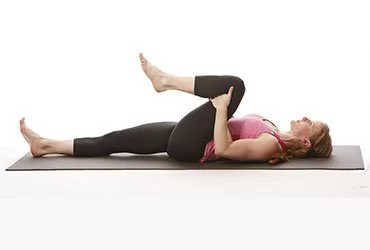
Your body’s side muscles can be stretched with the use of this workout.
- Step 1: Bend your knees and carefully rest on your back, using support if needed.
- Step 2: Reach over and take hold of one knee with both hands.
- Step 3: Count to five while pulling the knee toward you until you feel a tiny stretch in your back.
- Step 4: Exhale, then do the same with the other knee.
This procedure can be done five to ten times on each side.
Double Knee to Chest
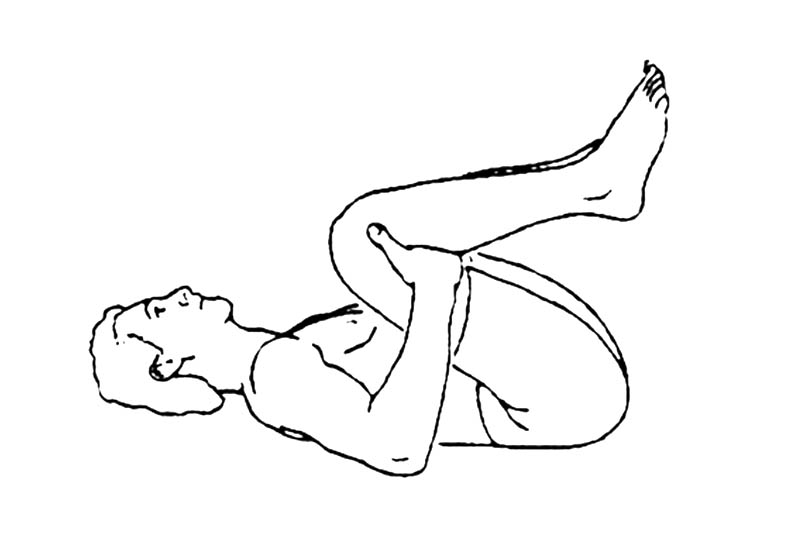
- While lying on your back, bring both knees up to your chest.
- At the same moment, tilt your head forward until your mid- and low-back regions are comfortably stretched.
- Perform five repetitions.
Cobra Stretch
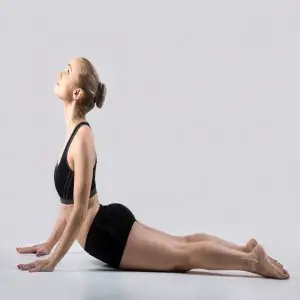
- Start the exercise by lying on your stomach. Raise yourself slowly up on your elbows, making sure your hips remain on the ground.
- Maintain this posture for ten to fifteen seconds, then lie back on your face in the prone position.
- Work your way up to holding the final position for 30 seconds, and you can complete this stretch with up to 10 repetitions.
- Try raising yourself onto your hands rather than your elbows to advance even further.
Piriformis Stretch
- Lay flat on your back with both of your heels on the ground and your legs bent.
- Place the ankle on the bent knee as you cross one leg over the other.
- Hold the crossed knee for 10 to 15 seconds
- Do three rounds of this on both sides.
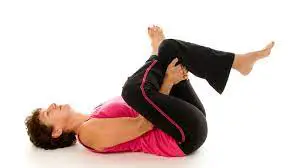
Cat-Cow Stretch
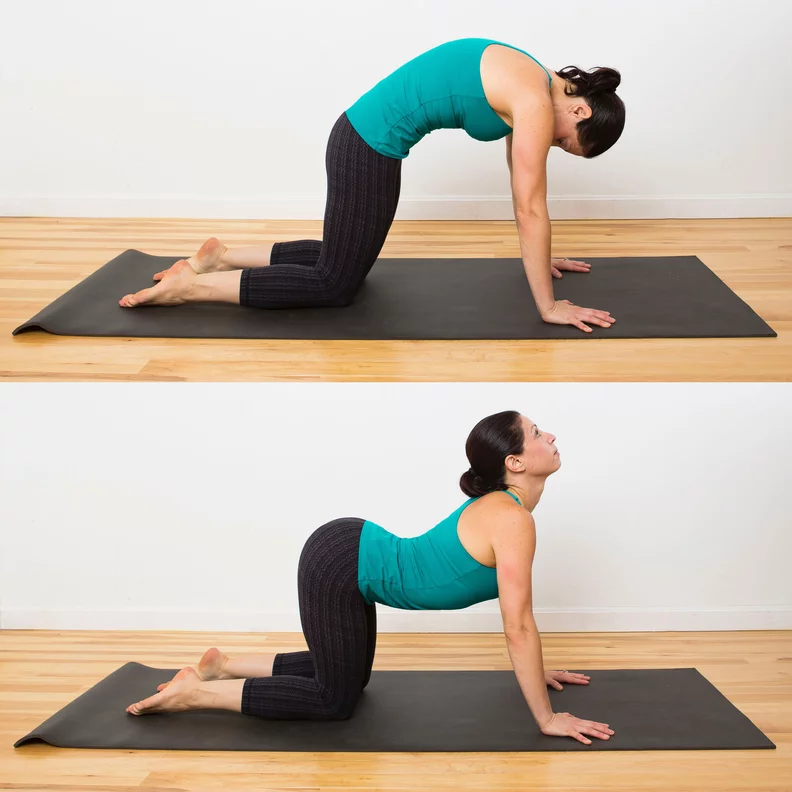
- Get on your hands and knees. Take a deep breath, look upwards, and let your abdomen “drop” to the ground.
- Next, release your breath, round your back slowly, press your hands into the floor, and bend your neck slightly to stare down at your feet.
- Target for 2 to 3 sets of 10 repetitions.
Bird Dog Stretch
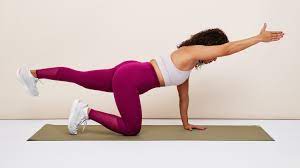
- Start on your hands and knees, while keeping your knees beneath your hips and your hands under your shoulders.
- To connect your left arm with your torso, raise it and stretch forward. Simultaneously, kick your right leg backward until it aligns with your torso.
- Return to the starting position carefully after holding this position for two to three seconds.
- Continue while using your left leg and right arm.
- Switch sides for two to three sets of ten reps.
- Maintain a neutral alignment of your head, neck, and back to reduce strain on your neck
Plank
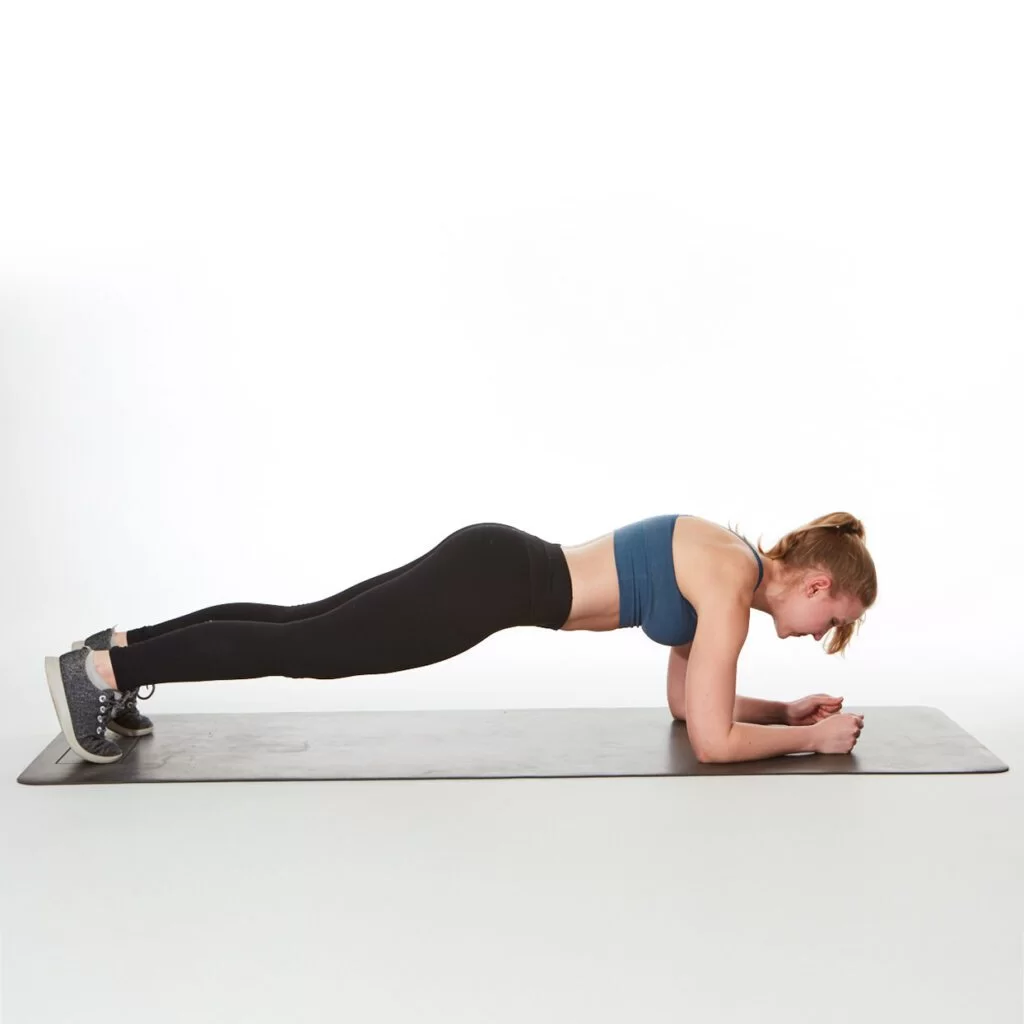
- Start by placing your forearms against the mat while lying on your stomach.
- Make sure your body rests on your forearms and toes by contracting your core muscles.
- Maintain the plank posture for 20 to 30 seconds (try to hold it for at least 10 seconds).
- Try to complete 5–10 repetitions.
When you’re ready, extend the duration of your plank by 10 seconds at a time to intensify the workout.
Exercises for Bulging Disc in Lower Back to Avoid
Avoid certain exercises even though they look beneficial. But the best indicator is frequently the body. Stop and don’t do it again if it hurts. Significantly worsening pain during any activity is never a good indicator of a therapeutic workout. Avoid doing the following workouts for ruptured discs:
- Toe Touches: excessive spinal strain and ruptured disc
- Sit-ups: The hip and spine are frequently subjected to excessive strain.
- Leg lifts: these frequently make lower back pain worse
- Lifting Over the Head: This motion, which involves both weights and boxes, calls for a strong back.
These workouts often overstretch the lower back, which delays healing and may exacerbate existing conditions.
Safety Points to Remember
Since Bulging Disc rehabilitation is a gradual process, you should proceed cautiously with each stretching exercise to prevent any setbacks. Attempting to move too rapidly could make the pain worse. Additionally, you should be careful not to lift anything unless you are certain of your weight support capacity. When you initially have a Bulging Disc, even groceries may feel excessively weighty.
FAQs
Can you fix a bulging disc with exercise?
Exercise can strengthen your back, improve spine stability, and lessen disc stress, even if it won’t definitely cure a bulging disc. Remember that every injury is unique, so before engaging in any intense exercise, it’s better to speak with a medical practitioner.
Can exercise cure L4-L5 disc bulge?
Effective exercise sessions for L4-L5 disc bulge focus on strengthening the back and core muscles. Low-impact exercises include swimming, elliptical use, and walking. Regular cycling and stationary biking can also help to improve the support system of the spine.
Is walking good for disc bulges?
Since they reduce the strain on the injured disc, low-impact exercises like walking, swimming, riding a stationary bike, and cycling are the best options. Pay attention to the pain signals your body sends you, and if your symptoms intensify or do not get better after resting or modifying your activity, give your doctor a call.
Can a bulging disc fully heal?
It is more difficult to say whether a disc herniation cures completely. Spinal discs have the capacity to repair and can potentially be asymptomatic in the meantime. If your mobility has returned and you are pain-free, you can declare yourself healed. However, healing isn’t necessarily the same as the absence of pain.
Do bulging discs go back to normal?
Another name for a herniated disk is a slipping, burst, or bulging disk. It’s among the most typical reasons why people get leg, back, and neck aches. Herniated disks typically recover on their own or with minimal home maintenance.
What is the best position to sleep with a bulging disk?
One of the best sleeping positions for herniated discs is on your back. It makes it possible for your weight to be distributed throughout your body equally. You can therefore lessen the amount of stress on your pressure points.



